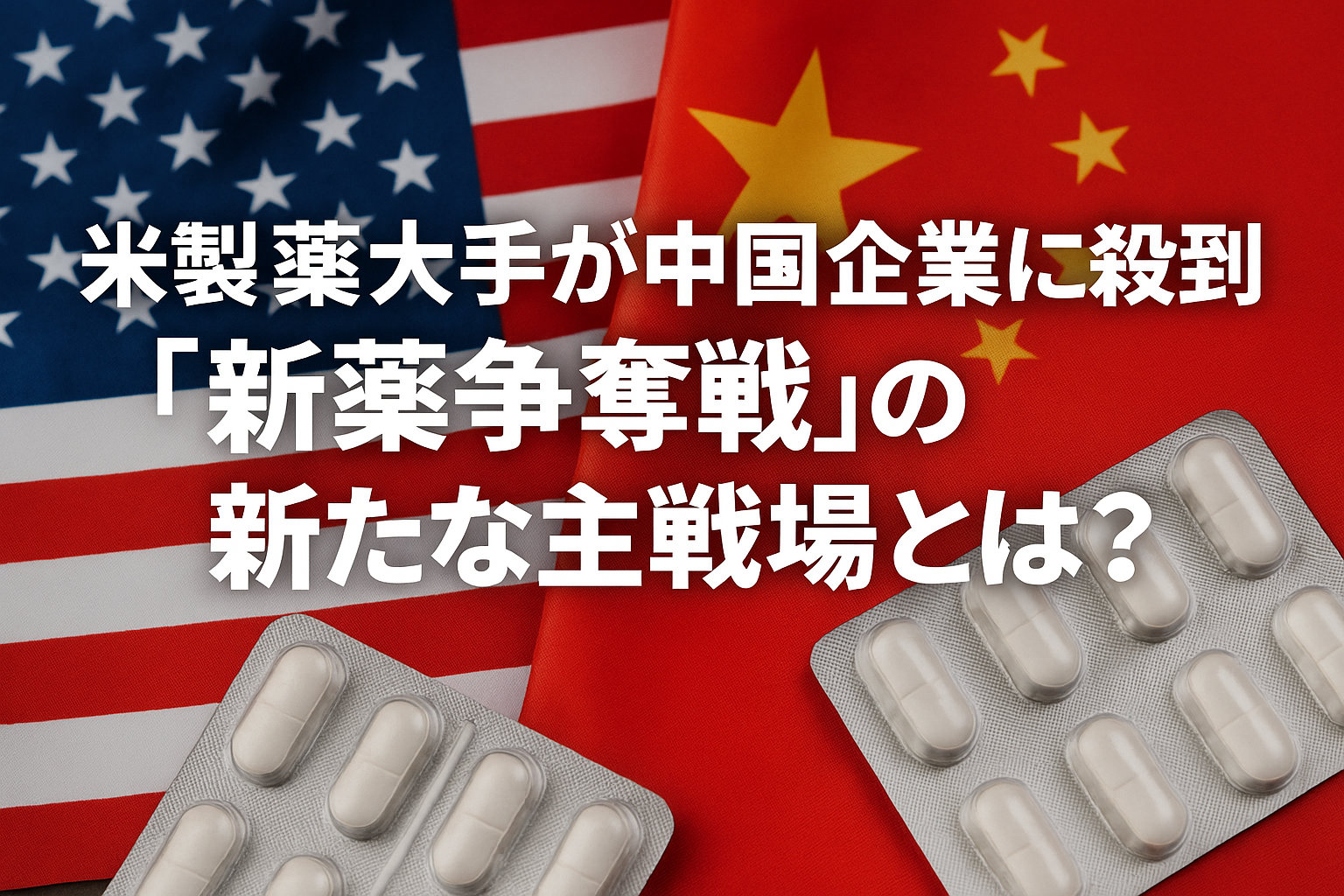Signs of a Paradigm Shift
As of 2025, the global pharmaceutical industry is undergoing a quiet yet profound transformation. Major U.S. pharmaceutical companies are shifting away from their traditional strategies—internal R&D and Western M&A—and rapidly moving to license early-stage drug candidates from Chinese biotech firms.
According to data reported by Reuters, the number of such licensing deals in the first half of 2025 surged sevenfold compared to the same period last year. The total deal value is expected to reach up to $18.3 billion (approximately ¥2.6 trillion).
Why Now? Why China?
At the heart of this trend lies a looming crisis in the U.S. pharmaceutical sector: the so-called patent cliff. Over the next decade, drugs worth a total of $200 billion will lose patent protection. In response, pharma companies are in a race to secure their next blockbuster drugs.
Licensing deals with Chinese firms are seen as an attractive solution. As an analyst from Mizuho Securities points out, “You can access high-quality drug candidates at far more reasonable prices than within the U.S.”
Indeed, over the past five years, U.S. firms have spent $84.8 billion on domestic deals, compared to just $31.3 billion on deals with Chinese companies—roughly one-third of the cost.
China’s Leap in Quality and Speed
What’s noteworthy is that Chinese firms are no longer just offering low-cost small molecules. Increasingly, they’re licensing out cutting-edge therapies such as cancer immunotherapies and first-in-class innovations.
This evolution is driven in large part by substantial R&D investments from the Chinese government in biotech and pharmaceuticals. Chinese firms are now generating a steady stream of innovative candidates in globally critical therapeutic areas—obesity, cardiovascular diseases, cancer, and more.
As the CEO of Nuvalent Bio puts it, establishing a presence in China is not just about cost savings; it means gaining “access to the expressway of R&D.”
From M&A to Licensing: A Strategic Pivot
U.S. pharma’s traditional model of innovation-through-acquisition is giving way to a new norm: licensing partnerships that allow for faster market access and risk diversification.
The appeal of milestone-based payments—structured compensation tied to development progress—is that it limits downside risk. This shift also helps explain why M&A activity has dropped by 20% year-over-year.
U.S.–China Tensions and IP: Will Geopolitics Become a Barrier?
Potential tariffs on pharmaceuticals proposed under the Trump administration could unsettle the industry. However, as of now, intellectual property remains exempt from such tariffs, and many experts believe licensing deals will remain viable.
Still, the growing dependency on China raises national security concerns. The political tension between the U.S. and China could yet pose future risks to the biopharma landscape.
Competition or Collaboration—Who Will Shape the Future Map of Pharma?
Some forecasts suggest that nearly 50% of future licensing deals could involve Chinese-origin drugs. Once regarded as latecomers, Chinese firms are now indispensable sources of innovation for Western pharmaceutical giants.
The frontlines of drug development are no longer confined to Boston or Basel. Beijing, Shanghai, and Suzhou are fast emerging as the new power centers that may redraw the geopolitical map of global pharma.

